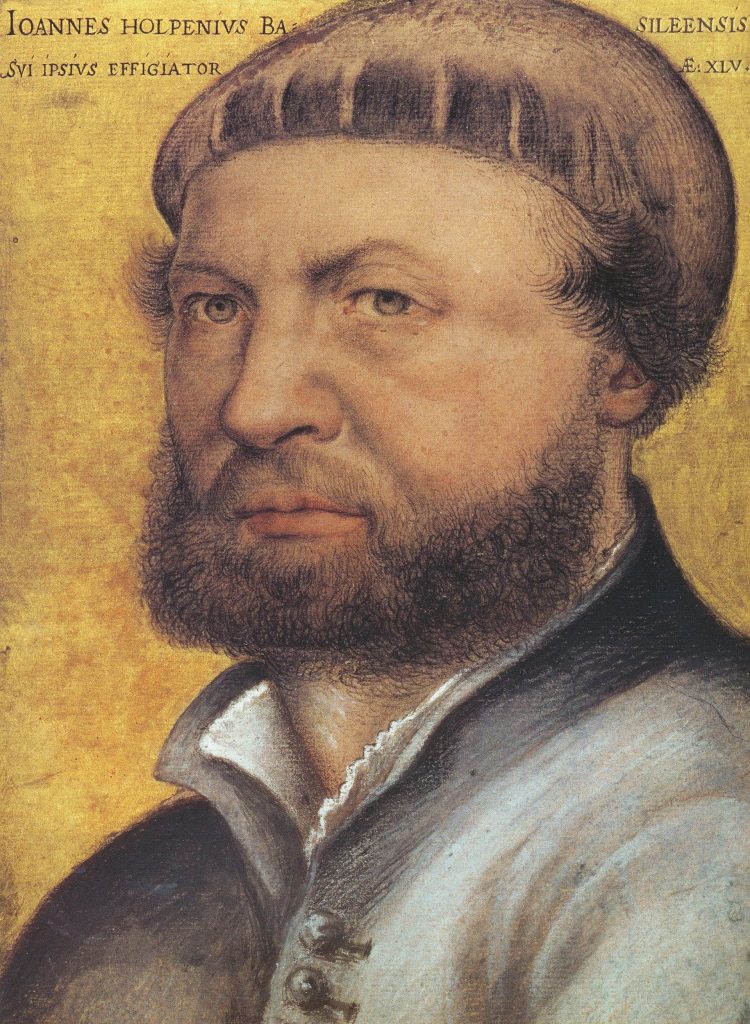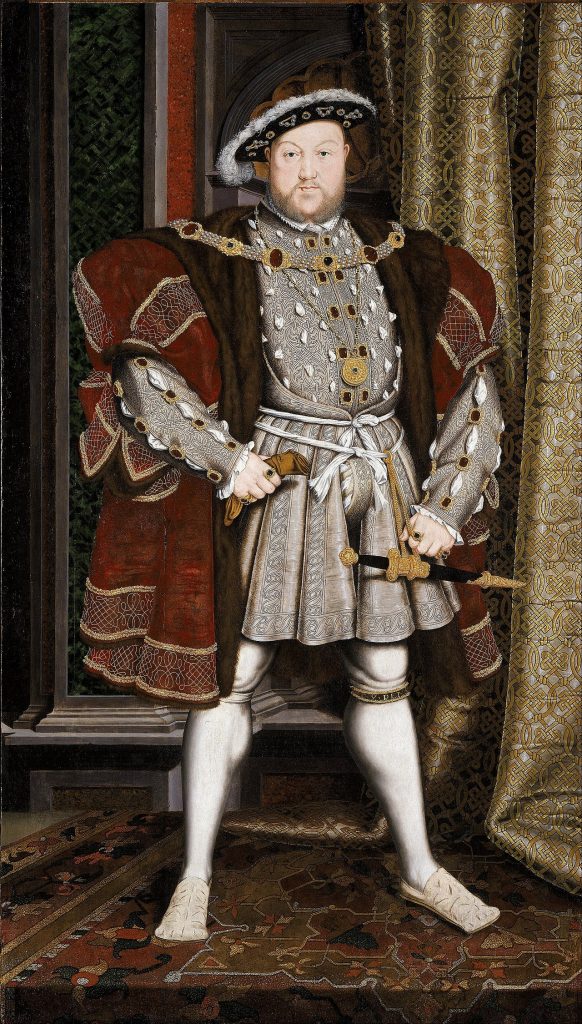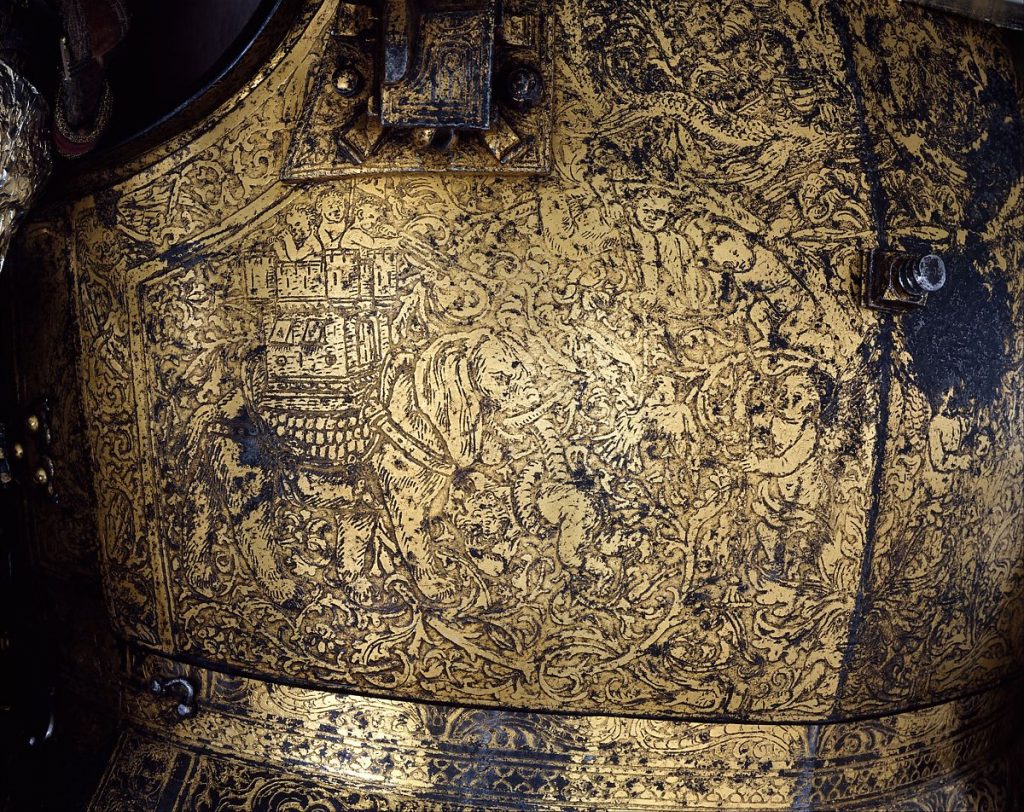Hans Holbein the Younger (not to be confused with his father, Hans Holbein the Elder) was born in the free imperial city of Augsburg, Bavaria in 1497 to a family of artists. As per German tradition, Holbein was a skilled draftsman and prepared each painting with a precise line drawing in chalk and ink. Many of his well preserved technical drawings are the only hint of a subsequent painting ever existing.

His most well-renowned painting was The Ambassadors which featured heavy use of symbolic objects and an anamorphic skull. Holbein was appointed as the King’s painter in 1535 and painted King Henry the VIII’s standard image of him standing with his legs apart and hands on his hips in Portrait of Henry VIII.
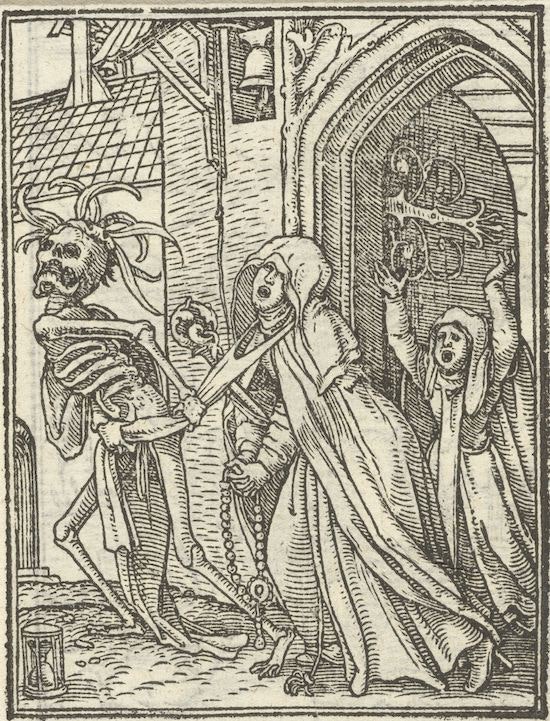
The Abbess 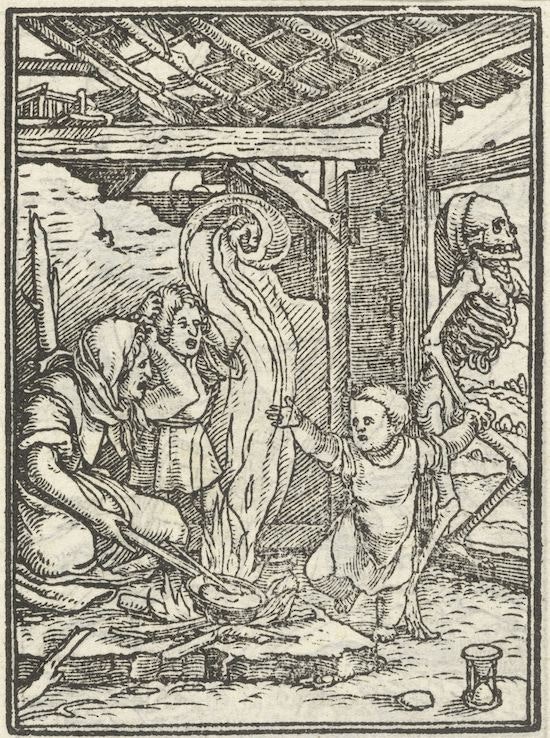
The Child 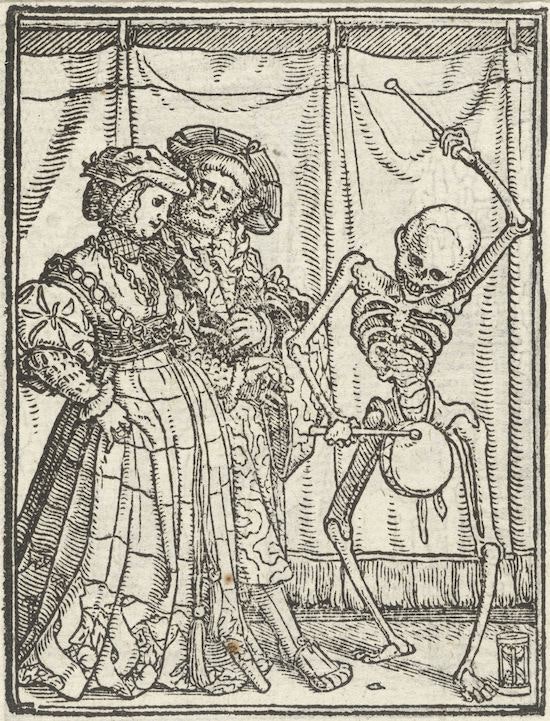
The Lady
Although he was known as one of the greatest portraitists of the High Renaissance, Hans Holbein was also an incredible designer. His design elements extended past gold leaf inscriptions and intricate decorations. The substantial contribution he made to book design can be observed in his woodcut series Dance for Death. He also has many drawings that show his designs for jewellery, momentous frescos, and clothing. Many of his designs went on to inspire engravings for the distinctively English Greenwich armour. Hans Holbein the Younger was lost to the plague in London in 1543.
References for Images:
https://en.wikipedia.org/wiki/Hans_Holbein_the_Younger
https://publicdomainreview.org/collection/hans-holbeins-dance-of-death-1523-5
https://theadventurine.com/culture/jewelry-history/henry-viiis-favorite-jewelry-designer/
References for Information
https://en.wikipedia.org/wiki/Hans_Holbein_the_Younger
https://www.britannica.com/biography/Hans-Holbein-the-Younger

